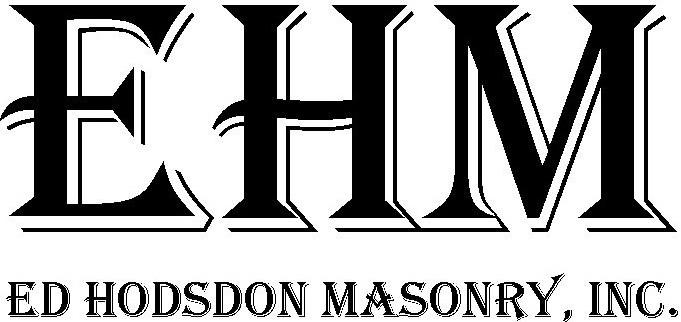
7 minute read
Monmouth’s Revolutionary War Heritage The legacy of Henry Dearborn
Monmouth’s Revolutionary War Heritage
The legacy of Henry Dearborn
Advertisement
by Charles Francis
What do the town of Monmouth, a little log hut on the Chaudiere River in Quebec, and the Battle of Monmouth have in common? The bond between them is Henry Dearborn, one of the great heroes of the Revolutionary War. Dearborn spent a great deal of his adult life in Monmouth. He spent a short period of time recuperating from fever, dehydration, and other maladies in the hut on the Chaudiere. At the Battle of Monmouth, the regiment that Dearborn led received a commendation from George Washington.
Monmouth and the Battle of Monmouth have something very much in common. The former was named for the latter. Prior to its incorporation as the town of Monmouth on January 20, 1792, the township where Henry Dearborn chose to make his home had been known by a myriad of names — Freetown, Bloomingborough and Wales. Dearborn, of course, was a factor in naming the town after a battle that was one of the most significant in the Revolution.
Henry Dearborn came to what would become Monmouth because of his family’s association with the Kennebec Proprietors. It was not the first time he had been in the area, however. He had been one of the eleven hundred volunteers who followed Benedict Arnold on his famous expedition up the Kennebec and Dead rivers, across the Height of Land, and down the Chaudiere River to Quebec City. That is how he came to lie, near death, in a hut on the Chaudiere in 1775.
Henry Dearborn is one of the most fascinating figures in the early history of the United States and Maine. Lauded as a hero in the Revolution, he was viewed as incompetent in the War of 1812. He was the Secretary of War under Thomas Jefferson, but the Senate refused to consider his nomination for the same post by James Madison. Elected to Congress from what was then the District of Maine by a substantial popular vote, he incurred the wrath of settlers in the region for his support of the Kennebec Proprietors in the Malta War.
Henry Dearborn was born in Hampton, New Hampshire on February 23, 1751. While not of the Boston elite, the Dearborns were a substantial family going back five generations in New Hampshire, to Godfrey Dearborn, who came from England in 1639. Henry Dearborn prepared for a career in medicine and, beginning in 1772, practiced for some three years in Nottingham Square, New Hampshire, until the Battle of Lexington and Concord. Sensing that the signs of war were escalating, he raised a company of volunteers and, as their captain, led them to Massachusetts in time to take part in the Battle of Bunker Hill. There he fought as a captain in Colonel John Stark’s 1st New Hampshire Regiment on June 17, 1775. Subsequently, Dearborn volunteered for Arnold’s march to Quebec.
It is, in part, thanks to Henry Dearborn that much is known about the trials and tribulations of Benedict Arnold’s men. His group toiled through an unseasonably cold and miserable fall along the Dead River to the high- (cont. on page 50)
FINLEY FUNERAL HOME
207-897-3588 15 Church Street Livermore Falls, Maine
207-933-4444 707 Main Street Monmouth, Maine ~ Caring for your needs since 1970 ~ of Maine
“From Our Forest to Final Form”
AUTHORIZED SALES CENTER New Equipment Sales & Service Ross Clair, Manager/Sawyer

207.592.2509 www.LLTimber.com

Lukeus Flagg Owner
(cont. from page 49) lands separating Maine from Quebec. Dearborn’s Journal While on Arnold’s March to Quebec has served as a major resource for historians of the Revolution, as well as for Kenneth Roberts’ epic of the Revolution, Arundel.
It was while Arnold’s Expedition was crossing the highlands that Dearborn became incapacitated and had to be left behind on the Chaudiere. However, he recovered enough to rejoin Arnold’s forces and take part in the abortive attack on Quebec. He was taken captive there. Upon his release as a result of a prisoner exchange, Dearborn went back into service and participated in the assault on Ticonderoga, wintered through at Valley Forge, and finally served on Washington’s staff beginning in 1781 as deputy quartermaster general with the rank of colonel. He was present at Yorktown when Cornwallis surrendered.
It was during the Battle of Monmouth that Dearborn first came to General Washington’s attention. Here, when General Charles Lee’s forces disobeyed orders and began to retreat, Dearborn’s regiment distinguished themselves by maintaining order. In part because of Dearborn’s leadership, the battle ended as a draw. Today it is looked upon as the first conflict in which American soldiers demonstrated the professionalism of their British counterparts.
In 1783 Dearborn moved to what would become Monmouth. One of his reasons for moving to the Kennebec region was to watch over his family interests in the Kennebec Proprietary. In 1787 Dearborn was made a general in the militia. Two years later he was named United States Marshal for the District of Maine. That same year he was elected as a Republican to the first of two terms in the House of Representatives. From 1801 to 1809 he served as Thomas Jefferson’s Secretary of War.
In 1809 the so-called Malta War broke out on the Kennebec. Settlers of Malta, known today as Windsor, went on the rampage when the Kennebec Proprietors claimed the right to charge them full value for their improved land. Originally, the settlers had simply squatted, cleared the land, built homes and barns, and planted crops. When they resorted to armed resistance to the Proprietors’ inflated price demands in order to gain legal title to their lands, Massachusetts sent in the militia to maintain order. The overall commander-in-chief was Major General Henry Dearborn, who was then collector for the port of Boston. A great deal of the settlers’ ire was directed at him.
During the War of 1812, Dearborn was made commander-in-chief of New England and upstate New York defenses. He was in charge of the territory from the Niagara River to the New England coast. Today, most historians agree that Dearborn had lost the leadership skills he had demonstrated so notably during the Revolution. Whatever the case, even though he captured the capital of Upper Canada, known today as Toronto, Dearborn was relieved of that command and given an administrative command in New York City. At the close of the war, President Madison nominated him for reappointment as Secretary of War. The Senate, however, refused to entertain his nomination under any circumstances. Monroe then appointed Dearborn as Minister Plenipotentiary to Portugal. He resigned in 1824 for matters of health. He died June 6, 1829, in Roxbury, Massachusetts. Monmouth can be justly proud of the fact that it is one of only a small number of towns in the United States to be named after a battle that played a significant role in the history of the United States. The town can be equally proud that Henry Dearborn, a man who could have chosen to live in one of the great cities of his day, chose to make it his home.
Discover Maine
~ Fully Insured ~ Historic Restoration Remodeling • Repairs
SIRAGUSA BUILDERS
SEAN SIRAGUSA 377-4722
Long Green Variety
Come Meet Rocko the Moose
Intersection of 108W and Rt. 4 Livermore, ME

Agency Liquor Store • ATM Sunoco Gas • New England Coffee Soda • Beer • Tobacco • Lottery Pizza & Sandwiches • Ice Cream
“Your Full Service Commercial Masonry Contractor”

BRICK VENEER ~ BLOCK WORK Fully Insured

Lane’s store and the post office in Leeds. Item # LB2007.1.101442 from the Eastern Illustrating & Publishing Co. Collection and www.PenobscotMarineMuseum.org
House’s Market & Redemption Movie Rentals Redemption Center Largest Wine Selection in N. Turner Specialty Beers now available All of your convenience items Located on Rte. 219 (off Rte. 4) Right across from the North Turner Post Offi ce, North Turner 224-8477

FENCE


Maine Owned & Operated MADE IN THE USA! Residential • Agricultural Creative design work to meet all your fencing needs!
Wood • Chain Link • Vinyl • Ornamental
- Serving Central & Western Maine -








